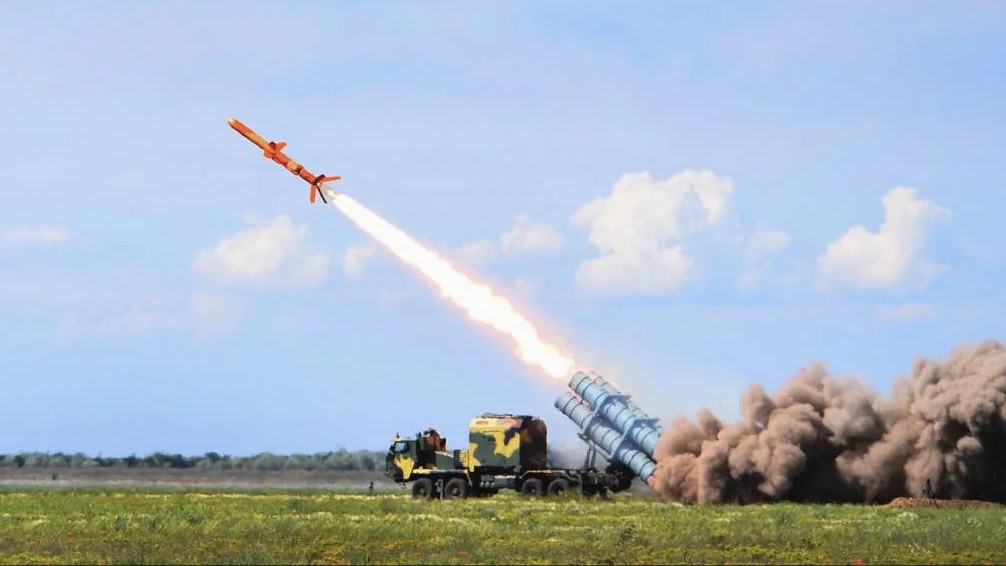Taiwan Shipbuilder Lays Keel for Advanced Anti-Air Warfare Frigate, Marking a New Era in Self-Reliant Defense

In a move that highlights Taiwan’s commitment to strengthening its naval defenses, a ceremonial keel-laying event was held for the Taiwan Navy's new anti-air warfare (AAW) frigate. Presided over by Taiwan’s President Lai Ching-te and attended by top officials and industry leaders, the event underscores Taiwan’s drive to build a modern, capable, and self-reliant military in the face of growing regional tensions.
A Milestone Ceremony in Taiwan's Naval Ambitions
The ceremony took place at Jong Shyn Shipbuilding Group’s shipyard, marking a new chapter in Taiwan’s efforts to construct advanced military vessels domestically. The occasion was attended by key figures, including Defense Minister Wellington Koo, Navy Chief Admiral Tang Hua, and Kaohsiung Mayor Chen Chi-mai. President Lai’s speech resonated with national pride and resilience, as he commended the collective efforts of the Ministry of National Defense, the National Chung-Shan Institute of Science and Technology (NCSIST), and the shipbuilder itself. He emphasized the importance of the project not only for Taiwan’s defensive posture but also for stimulating the local economy and fostering domestic industry growth.
Taiwan’s New Generation Frigate Program: A Strategic Pivot
The keel-laying ceremony represents the latest phase in Taiwan’s “New Generation Frigate Program,” an ambitious initiative first outlined in 2016 as part of a 12-item naval modernization plan. Initially, the Republic of China (ROC) Navy envisioned a 4,500-ton frigate equipped with a state-of-the-art active electronically scanned array (AESA) radar. However, due to technical and logistical challenges, the program shifted its focus in recent years. NCSIST faced significant obstacles in miniaturizing the active ESA radar technology to fit the original 4,500-ton design.
As a result, the ROC Navy revised its specifications to create a smaller, approximately 2,500-ton frigate. This lighter design allows the Navy to address two critical needs simultaneously by building two frigate variants: one for anti-air warfare (AAW) and the other for anti-submarine warfare (ASW). This adaptable approach has helped Taiwan pursue multiple defense objectives within a single shipbuilding program, maximizing resources and capabilities. The AAW variant, whose keel was just laid, will significantly bolster Taiwan's air defense capabilities in the face of increased airspace challenges.
What Makes Taiwan’s New Frigate Unique?
The AAW frigate is designed with an advanced suite of technology and weaponry to provide robust air defense coverage. Though specific technical details remain classified, it’s anticipated that the frigate will include:
- Advanced Radar Systems: The ship will likely be equipped with a sophisticated ESA radar capable of tracking and engaging multiple airborne threats. While the initial program explored Taiwan-developed radars, recent reports suggest potential integration of U.S.-supplied AN/SPY-7 phased array radar technology, a system known for its superior target detection and tracking accuracy.
- Modern Missile Systems: To match its radar capabilities, the AAW frigate is expected to carry a range of surface-to-air missiles, providing the ability to intercept hostile aircraft, drones, and incoming missiles.
- Enhanced Automation and Electronics: As part of the design shift to a lighter 2,500-ton vessel, Taiwan’s engineers are expected to incorporate more automated systems, reducing crew size while enhancing operational efficiency. Such automation is in line with global trends in warship design, offering Taiwan a competitive edge with a highly responsive, low-maintenance fleet.
Replacing Taiwan’s Aging Fleet with Self-Reliant Technology
Taiwan's current surface combat fleet includes a total of 26 ships, many of which are nearing obsolescence. The Navy’s aging vessels include ten Cheng Kung-class frigates, six Kang Ding-class frigates based on the French La Fayette-class, and the older Chi Yang-class frigates acquired from the United States. Among these, the Chi Yang-class, which have been in service for over 47 years, utilize outdated steam turbine technology and possess limited air defense capabilities, making them less effective in modern naval warfare.
In contrast, Taiwan’s new AAW frigate will feature a compact design packed with state-of-the-art systems for air surveillance and defense, directly countering threats from more advanced naval forces in the region. The development of this frigate is a part of Taiwan's broader strategy to replace outdated ships with highly capable, domestically built vessels, thereby reducing dependence on foreign defense support and securing a higher degree of operational autonomy.
Future Prospects: A Modernized and Self-Reliant Taiwanese Navy
While Taiwan’s naval planners are working on the AAW and ASW frigate variants, there are also discussions regarding the potential revival of the original large-frigate plan. This would involve constructing a 4,500-ton vessel equipped with advanced radar and missile systems similar to the Aegis-equipped ships seen in other regional navies. However, the feasibility of this project remains uncertain due to budget constraints; the FY 2025 defense budget does not currently allocate funds for this expanded frigate plan. For now, Taiwan’s focus remains on building smaller, more versatile frigates that can effectively fulfill critical air and undersea defense roles.
The keel-laying ceremony for the AAW frigate not only showcases Taiwan’s military resilience but also represents a growing commitment to leveraging domestic talent and resources to enhance national security. As Taiwan continues to prioritize self-reliance in defense, this new generation of frigates will play a central role in securing Taiwan’s maritime territory, ensuring that the country is better prepared for future challenges.


